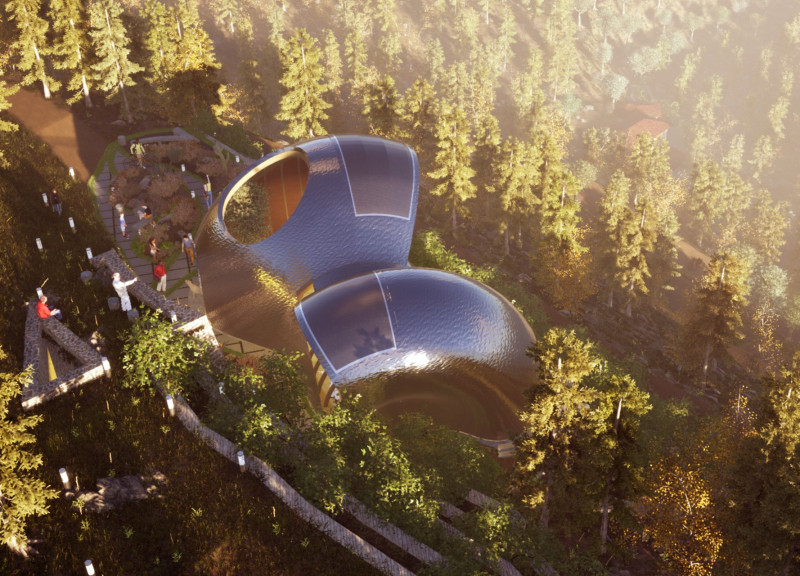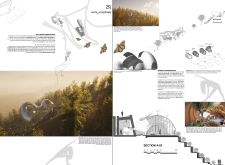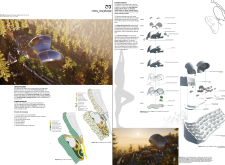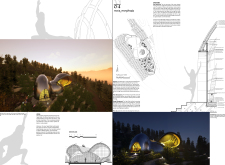5 key facts about this project
The primary function of the Yoga Shala is to provide a dedicated area for yoga sessions, workshops, and group gatherings. Its layout accommodates versatile usage, with intentional spatial arrangements that allow for both large classes and intimate smaller group interactions. The structure mediates between indoor and outdoor environments, promoting an immersive experience that aligns with the natural surroundings.
Unique Design Approaches
The architecture implements an organic geometric form that closely mimics the shape of a butterfly’s wings, symbolizing evolution and transformation. This design approach distinguishes the Yoga Shala from traditional yoga spaces, integrating fluid contours to establish a calming ambiance. The curvature of the walls and the sculptural roof contribute to its distinctive aesthetic while maintaining practical functionality.
The material selection underscores the project’s commitment to sustainability. Key materials include structural wood, selected for its thermal properties and aesthetic warmth; glass, used to maximize natural light and create visual connectivity with the outdoors; and steel, which provides the necessary structural integrity to support the building’s organic forms. Reinforced concrete serves as a reliable foundation. This mix of materials enhances durability while ensuring the design remains in harmony with its environment.
Spatial organization plays a crucial role in enhancing user experience. The layout incorporates large, open areas for group activities alongside smaller alcoves for meditation and personal practice, effectively addressing the diverse needs of users. Strategically placed skylights and expansive glass walls further facilitate natural illumination, minimizing reliance on artificial lighting and reinforcing a connection with the external landscape.
Integration with Landscape and Natural Elements
The project emphasizes biophilic principles, seamlessly merging the built environment with the natural landscape. Outdoor pathways, gardens, and reflective spaces surround the Yoga Shala, leading to a thoughtful interplay between architecture and nature. The Xeriscape garden is designed to require minimal water, incorporating native plants that offer sustainable beauty. This approach not only enhances the aesthetics of the retreat but also supports local ecology.
Opportunities exist for readers to explore the intricacies of the Yoga Shala through detailed architectural plans, sections, and designs. Engaging with these elements can provide further insights into the innovative architectural ideas at play in this project and how they effectively address the goals of promoting well-being and sustainability.


























